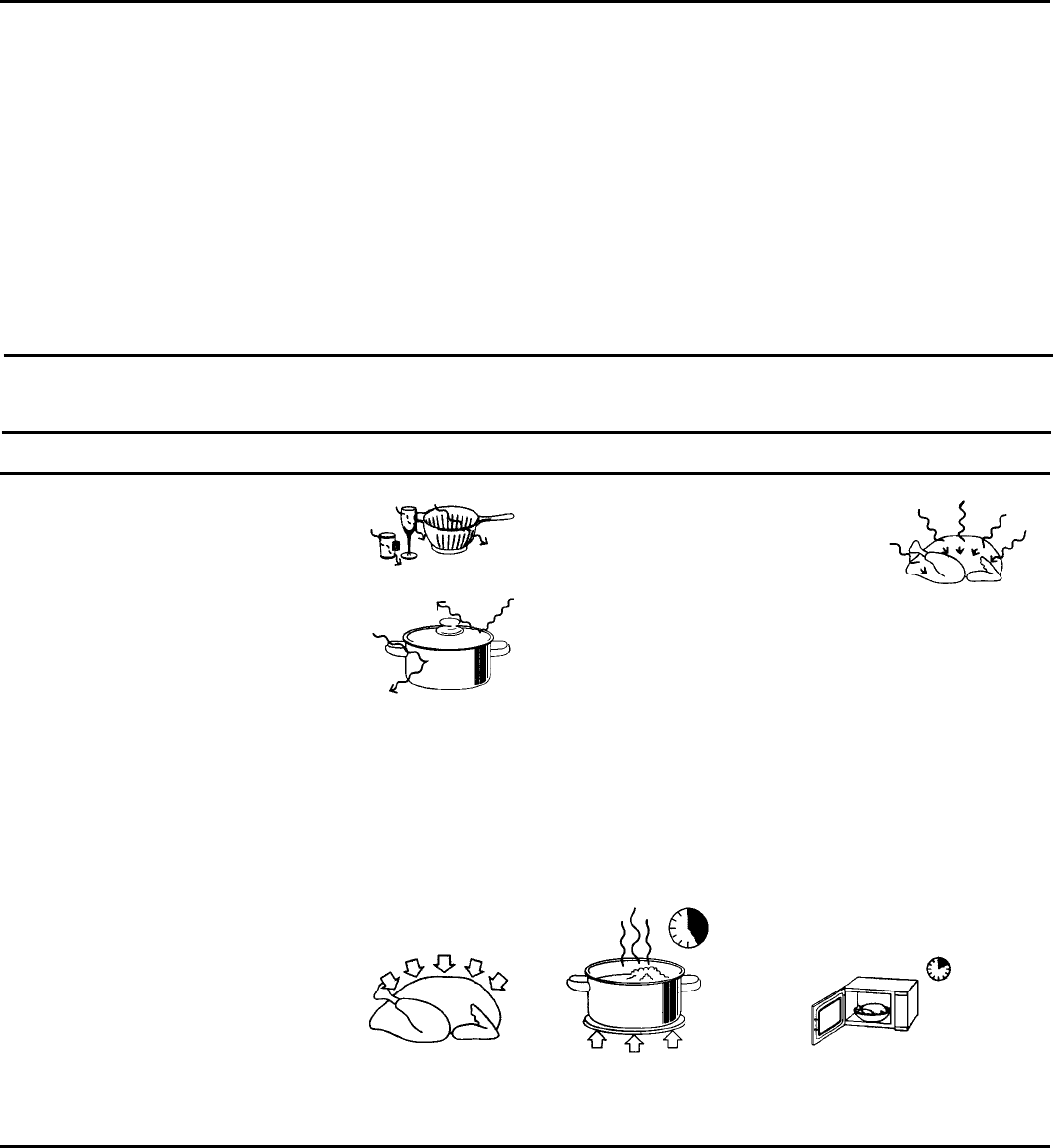
Working with microwaves
Microwaves - what are they?
Microwaves are like TV waves or light
waves. You cannot see them, but you can
see their effect.
Just like ordinary daylight passes through
glass, clear plastic and air, the microwaves
have the ability to go through materials like
paper, glass, porcelain, plastic and air.
These materials do not contain water or
metal and will consequently not be heated up
by the microwaves. The microwaves are
reflected by metal in the same way as light is reflected by a
mirror.
Microwaves are absorbed by water, oil and fat. The water, oil
and fat molecules are exited by microwaves and rub against
each other, just like when you rub your hands quickly against
each other and heat is produced. The speed of rubbing
determines the temperature. Microwave energy is not hot. It
simply causes the food to make its own heat.
When we heat food with infra waves
(Grill or hot air), in a normal oven, the
heat is applied on the surface of the
food and then conducts (transfers) to
the centre of the food. Food has a
rather poor ability to conduct heat and it
therefore takes a long time to heat the
food.
Grill heating
Food always contains water. When we
heat the food with microwaves the water
molecules in the food are excited and
heat is produced. The microwaves reach
into the food and at the same time
enters the food from all directions.
That’s why the food is heated so rapidly.
Microwave heating
You save time when cooking with a microwave oven. You
usually also save energy, especially when cooking small
amounts of food.
If you boil fish in a sauce-pan with water, the electrical energy
must first heat the hot-plate. The heat must transfer from the
hot-plate to the sauce-pan and from the sauce-pan to the water
which then will heat the fish.
In a microwave oven the electrical energy is converted to
microwaves and almost all of the microwave energy is then
converted to heat inside the food
Cook time
20 - 25 min.
Cook time
10 min.
9
How to choose power level?
P 10
P 3 - P2
- Fast reheat of beverages, water, clear soups, coffee, tea or
- To be used when simmering stews.
other food with a high water content. If the food contains egg
Defrost
or cream choose a lower power.
- To be used for manual defrosting.
- To be used for cooking of vegetables, fish, meat etc.
P 1
P 7 - P 6
- To be used for softening butter, cheese and ice cream, or
- To be used when cooking dishes not possible to stir.
for defrosting sensitive food.
- To be used when more careful cooking is required e.g. high
protein sauces, cheese and egg dishes and to finish
cooking casseroles.
P 9 - P 8
P 5 - P 4


















